You might just have read about the health benefits of fermented vegetables for your body. One thing to keep in mind is that they must be a regular component of your diet, but let me inform you, eating sauerkraut every day might get boring.
Remember that consuming only one type of fermented food prevents you from reaping the health advantages of other fermented foods. You need diversity to acquire the entire spectrum of nutrients that various vegetables offer. Additionally, foods that have been fermented or cultured are a fantastic source of the probiotic bacteria needed to maintain wellness.
The risk of heart disease appears to be reduced when fermented foods are included in a healthy, balanced diet. Modest reductions in blood pressure and enhancements in cholesterol balance might be contributing factors.
In this article, I take a closer look at what you can do with all the fermented vegetables. Here are 7 ways to help you sneak fermented foods into meals.
Fermented Garlic
I highly recommend you use fermented garlic. Garlic is delicious after it has been fermented. Although fermenting the garlic gradually softens and mellows it, raw garlic is frequently too harsh and aromatic to add to recipes without cooking. It is mild enough to be added straight to marinades, salad dressings, and other meals that don’t need to be cooked.
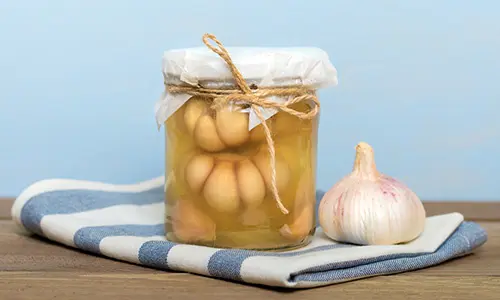
Carrot Salad
Making a nutritious probiotic salad with fermented carrots has several health advantages and helps you fill your stomach with healthy bacteria.
The carrots must first be fermented before the remaining ingredients are added to the salad. You must use a slicer or a vegetable peeler to shred the carrots into paper-thin ribbons. Salt should be added, then massaged until juice is released. Shaved carrots should be placed in a jar and let ferment for three to five days.
The fermented carrot salad may be put together by adding the other ingredients and spices, and the jar can be stored in the refrigerator for up to two months after that.
Related: Vertical Garden: 26 Plants To Grow Your Own
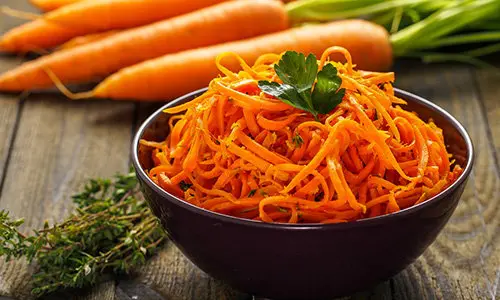
Green Salads
The majority of vegetables can be fermented, and because they are still regarded as raw, they are excellent salad ingredients. Just make sauerkraut from your favorite veggies such as carrots, peppers, beets, and onions. Choose the ones you prefer. Fermented veggies can still be crisp, which can provide many salads the essential variation.
The digestion of salad proteins like meat and beans is aided by these fermented foods. Additionally, these fantastic digestive enzymes have no trouble aiding in the digestion of other raw, unfermented veggies.
As A Condiment
You can ferment almost any homemade condiment. I have a fantastic mayo recipe. You can add probiotic goodness to condiments by simply adding whey or starter culture to your favorite homemade ketchup, or mustard (place the lid on and leave it at room temperature overnight).
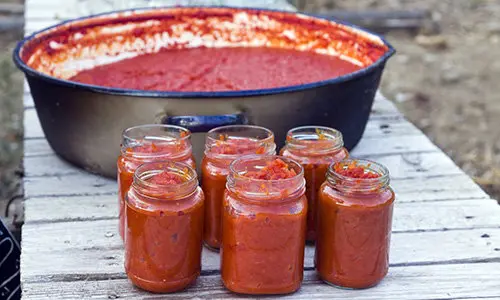
As A Topping
This one is simple. As everyone is aware, you might add some sauerkraut to the platter in addition to the main dish. However, how about serving the side with the main course? Sauerkraut presents fantastic meat topping. When served with chicken, it serves to enhance the flavor of the chicken while softening the sourness of the sauerkraut.
The fermented vegetable also has the added benefit of having amazing digestive enzymes that aid in breaking down the proteins in the meat.
There are several more fermented foods that are excellent eating companions. What about putting ketchup on some eggs? Create some fermented ketchup for even another delicious topping, and don’t forget that those enzymes aid in the breakdown of the proteins in the eggs.
Related: 10 Fruits And Veggies To Dehydrate For Long-Time Storage
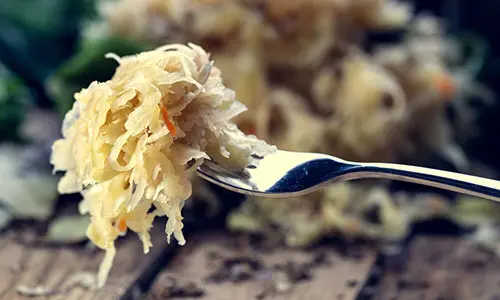
Smoothies
This is a very less known fact but fermented vegetables can also be utilized in smoothies. Vegetables that have been fermented can be put into smoothies in the same way as spinach can. Just be careful not to add too many veggies, as they might be harsh. In addition to being a fermented food, homemade yogurt is a fantastic smoothie basis. Many of the essential microorganisms we require for a healthy diet may be found in yogurt.

Flavoring Sauces
Use the probiotic-rich, delicious vegetable brine that is left behind to flavor sauces and soups. Just bear in mind that these ingredients must be introduced toward the end of cooking so that high temperatures have passed and the beneficial bacteria are less likely to be killed. You can add a nice additional flavor to spaghetti sauce.
Increasing the food’s nutritional content and shelf life, fermented vegetables can also provide your body with a dosage of beneficial probiotics.
All of these above-mentioned ways were personally utilized by me and had a positive impact on my body. You can also apply these ways and make use of your fermented vegetables right away.
You may also like:
 8 Dangerous Mistakes To Avoid When Storing Your Food
8 Dangerous Mistakes To Avoid When Storing Your Food
100+ Long Lasting Foods that Can be Stored Without Refrigeration (Video)
Canning Secrets Nobody Tells You About

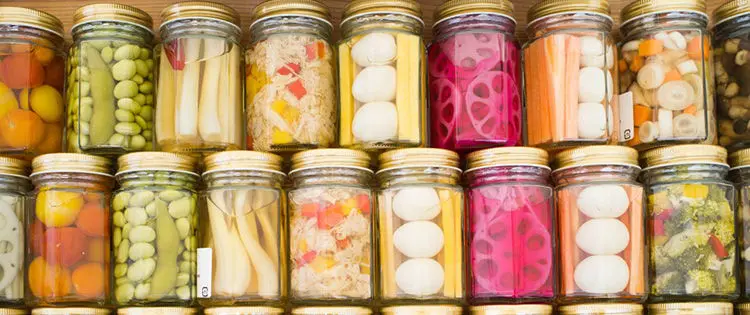








Fermented mayo??? Please, please publish this recipe!
I agree! I want the fermented Mayo recipe!
You can always find this (like everything in the world) on google or youtube. I’ve just found several directly on youtube
how do you ferment the garlic? what do you use and how long.
Lightly smash a clove, enough to peel, but still leave the clove in tact. I’ll typically do 2-3 heads worth at a time. Place the peeled cloves in a jar and cover with raw honey. Place lid loosely. At least once a day, burp the jar to release the gas produced by the fermentation process. Tighten the lid and flip the jar to ensure the garlic has all been coated.
The process takes about a month.
Okay, I see eggs in that first picture. Are they pickled/fermented?